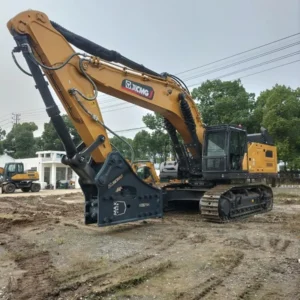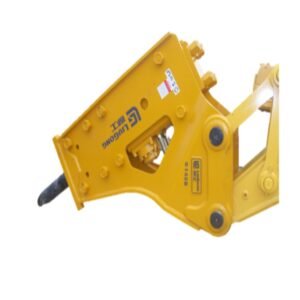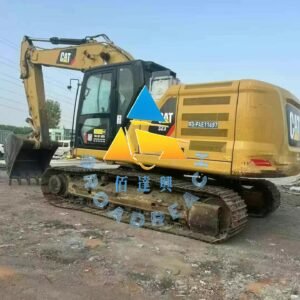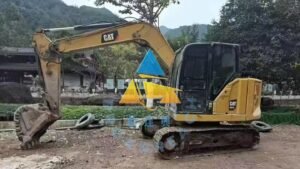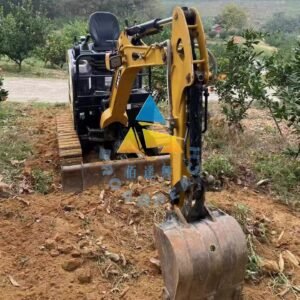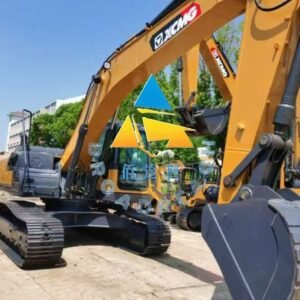BroadReach Construction Machinery Co., Ltd

Tips for Inspecting a Used Excavator Before Purchase
Buying a used excavator can be a smart move if you know what to look for. However, inspecting a used machine thoroughly is key to making sure you’re getting good value for your money and avoiding any costly surprises down the road. Whether you’re buying from a dealer or a private seller, here’s a step-by-step checklist to help you inspect the machine carefully and make an informed decision.
1. Check the Undercarriage
The undercarriage is one of the most critical components of an excavator and can be quite expensive to replace if it’s worn out. Here’s what to look for:
- Tracks: Inspect the tracks for signs of wear and tear. Look for cracks, gouges, or any uneven wear. Uneven wear could indicate that the machine has been misused or improperly maintained.
- Rollers and Idlers: Check the rollers and idlers for signs of rust or damage. These should move freely, and there should be no significant play or loose parts.
- Sprockets: The sprockets should also show little to no wear. If they’re heavily worn, it could signal the machine hasn’t been properly maintained.
2. Inspect the Engine and Hydraulic System
The engine and hydraulic system are the heart of the excavator. Here’s how to check both:
- Engine Oil: Check the engine oil to ensure it’s clean and at the correct level. Dirty or low oil could signal poor maintenance, which might lead to future engine problems.
- Hydraulic Oil: Look for signs of leaks around the hydraulic hoses, cylinders, and valves. Low hydraulic oil levels could indicate a leak or a poorly maintained system.
- Leaks: Walk around the machine and inspect for any visible oil or fluid leaks, especially around the engine, hydraulic lines, and attachments. Leaks can be a sign of serious issues, so it’s essential to identify them before purchasing.
3. Review Service and Maintenance Records
If you can get your hands on the machine’s service and maintenance records, take time to go through them. This will give you an idea of how well the excavator has been taken care of over the years. Look for:
- Regular Maintenance: The machine should have undergone regular maintenance like oil changes, filter replacements, and hydraulic checks.
- Repairs: Check for any major repairs, such as engine rebuilds or transmission fixes. While some repairs are normal, large-scale repairs could indicate the machine was heavily used or poorly maintained.
- Inspection Reports: Look for any inspections or assessments performed by professionals that can give you more peace of mind about the machine’s condition.
4. Inspect the Bucket and Attachments
The bucket and other attachments (like the arm, boom, or stick) take a lot of stress and wear over time. Inspect the following:
- Bucket Teeth: Check the bucket teeth for wear. They should be sharp and not excessively worn down. If they’re worn, it could mean the machine has been used heavily for tough jobs.
- Hydraulic Couplings: Inspect the hydraulic couplings and pins for any sign of leaks or wear. If these parts are damaged, they could lead to costly repairs.
- Boom and Stick: Look for cracks or any signs of welding repairs on the boom and stick. These parts should be straight and free of any significant damage.
5. Check the Cabin and Controls
A comfortable and fully functional cabin is crucial for your safety and productivity. Here’s what to check inside the cabin:
- Seats and Controls: Check the seat for comfort and make sure all controls (joystick, pedals, levers) are responsive and easy to use. Pay attention to any unusual sounds or vibrations when operating them.
- Gauges and Lights: Ensure that all the gauges (engine temperature, fuel, hydraulic pressure) are working correctly. Verify that the lights (indicators, headlights) are fully functional.
- Air Conditioning and Heating: Depending on the climate, you may want to check if the air conditioning and heating systems are working, especially if you plan to use the machine in hot or cold environments.
6. Test Drive the Excavator
Once you’ve completed your visual inspection, take the excavator for a test drive. Here’s what to check while operating the machine:
- Start-Up: Pay attention to how easily the machine starts. It should start up smoothly without any unusual sounds or long cranking.
- Smooth Operation: When operating the machine, check how smoothly it moves, turns, and pivots. Any jerking, unusual noises, or difficulty in operation could be signs of underlying mechanical issues.
- Hydraulic Response: Test the hydraulic system by extending and retracting the boom and arm, and moving the bucket. The hydraulic system should respond quickly without lag or hesitation.
7. Consider Bringing in a Professional Inspector
Even if you’re confident in your ability to inspect a machine, it’s always a good idea to hire a professional inspector who can give you a thorough evaluation. A professional inspector will be able to:
- Identify Hidden Issues: Some problems may not be visible to the untrained eye, especially within the engine or hydraulic system. A pro will know exactly where to look and what to test.
- Give You an Expert Opinion: If you’re unsure about any aspect of the excavator’s condition, a professional can give you peace of mind and help you avoid making an expensive mistake.
- Help You Negotiate: If issues are found during the inspection, the inspector can help you negotiate a fair price or request repairs before finalizing the purchase.
Conclusion
Inspecting a used excavator requires careful attention to detail, but it’s well worth the effort. By checking key areas like the undercarriage, engine, hydraulic system, and attachments, you can make sure you’re buying a machine that will serve you well for years to come. And if you’re unsure about anything, don’t hesitate to bring in a professional to make sure you’re making a smart investment. With the right inspection, a used excavator can be a great choice for your business!

